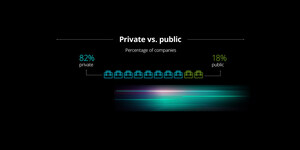NEW YORK, Jan. 14, 2014 /PRNewswire/ -- Deloitte predicts smart glasses, fitness bands and watches, should sell about 10 million units in 2014, generating $3 billion according to its Technology, Media and Telecommunications (TMT) Predictions 2014 report released today. Deloitte also predicts that the total global sales of smartphones, tablets, PCs, TV sets and gaming consoles will exceed $750 billion in 2014 and then plateau as consumer usage will continue to converge.
(Logo: http://photos.prnewswire.com/prnh/20120803/MM52028LOGO-a )
"Our predictions for 2014 touch on a wide variety of topics, but there is some commonality among them. This can be seen specifically with mobile devices including tablets, wearables, phablets and also rugged devices," said Eric Openshaw, vice chairman, Deloitte LLP and U.S. technology, media and telecommunications leader. "These newer technologies allow enterprises and consumers to become more connected, while opening a wealth of new business and communication opportunities. Enterprises that can capitalize on these new market segments will be well positioned for success in 2014 and beyond."
For more than a decade, Deloitte's TMT Predictions have forecasted many of the most influential trends in technology, media and telecommunications — making them a key source of market intelligence for businesses in all sectors.
The most significant TMT predictions to impact the marketplace in 2014:
1. Wearables: the eyes have it — Smart glasses, fitness bands and watches, should sell about 10 million units in 2014, generating $3 billion. Of these wearable computer form factors, smart glasses should generate most revenues, from sales of about four million units at an average selling price (ASP) of $500. Smart fitness bands should sell four million units, at an ASP of $140; smart watches should sell about two million units at an ASP of $200.
2. The Converged Living Room: a plateau approaches — Global sales of smartphones, tablets, PCs, TV sets and videogame consoles will exceed $750 billion in 2014, up $50 billion from 2013 and almost double the 2010 total. However, a plateau appears likely: sales are expected to continue growing, but at a slower rate than over the past 10 years, with an estimated ceiling of about $800 billion per year.
3. Massive Open Online Courses: the future is bright — Student registrations in Massive Open Online Courses (MOOCs) will be double compared to 2012 to over 10 million courses, but the low completion rates mean that less than 0.2 percent of all courses completed in 2014 will be MOOCs. The growing awareness of online education will force educational institutions to increase investment in this area, drive more acceptance of online education as it becomes accredited and increase adoption by corporate training groups.
4. eVisits: the 21st century housecall — There will be 100 million eVisits globally, potentially saving over $5 billion when compared to the cost of in-person doctor visits and representing growth of 400 percent from 2012 levels.
5. Television measurement: for better and worse — Measurement of the viewing of domestic television programs is increasingly reflecting the growth of online viewing thanks to the introduction of hybrid measurement, which enables the inclusion of viewing taking place on PCs, tablets and smartphones into overall viewing numbers, and also includes other data sets, such as set-top box channel selections and video-on-demand server logs.
6. Phablets are not a Phad, but they may be peaking — Shipments of phablets, smartphones with 5.0-6.9 inch screens, will represent a quarter of smartphones sold, or 300 million units. That is double the 2013 volume, and 10 times 2012 sales. But after initial rapid consumer success, 2014 may mark a 'peak phablet' year, as only a (sizeable) minority of smartphones users will want to handle such a large device.
7. The smartphone generation gap: Over 55? There's no app for that — Those over 55 years of age will be the age group experiencing the fastest year-on-year rises in smartphone penetration across developed markets. Ownership should rise between 45 to 50 percent by year-end, lower than the approximately 70 percent penetration rate for 18-54 year olds, but a 25 percent increase from 2013.
8. Rugged devices at $250: reinventing the business case for mobile field force — The entry price for a ruggedized, connected data device that can be used by some field force workers, as well as to undertake tasks such as car rental check-in inspections, inspecting highways or delivering packages, will fall to $250.
Full details about the Global TMT Predictions are available here: http://www.deloitte.com/Predictions2014.
Connect with us on Twitter: @DeloitteTMT and @Deloitte #TMTPredictions.
About Deloitte's Technology, Media & Telecommunications practice
Deloitte's technology, media & telecommunications practice serves more than 1,400 clients in the U.S., including the vast majority of market category leaders across all sector segments. Deloitte practitioners, many with direct industry experience, deliver a breadth of services including professional audit, consulting, enterprise risk management, financial advisory and tax. The practice is also home to the Deloitte Center for the Edge, which conducts original research and develops substantive points of view for new corporate growth. The Silicon Valley-based Center helps senior executives make sense of and profit from emerging opportunities on the edge of business and technology.
As used in this document, "Deloitte" means Deloitte LLP and its subsidiaries. Please see www.deloitte.com/us/about for a detailed description of the legal structure of Deloitte LLP and its subsidiaries. Certain services may not be available to attest clients under the rules and regulations of public accounting.
SOURCE Deloitte
WANT YOUR COMPANY'S NEWS FEATURED ON PRNEWSWIRE.COM?
Newsrooms &
Influencers
Digital Media
Outlets
Journalists
Opted In





Share this article